HTML
--> --> -->Many collaborations use the HBT method to analyze different collisions at different energies [10-14]. Most of them show the phenomenon of transverse momentum or transverse mass dependence of HBT radii. The shrinking of HBT radii with increasing transverse momentum is associated with collective flow [15,16]. At the energy range of the Beam Energy Scan Phase II (BES-II) at RHIC, the flow is not as strong compared with the flow at the LHC energy range [17]. Thus, when the particles freeze out, there will be a finite angle between the radius and the momentum vectors. We named this the single-particle space-momentum angle
 Figure1. Diagram depicting
Figure1. Diagram depicting We use locally thermalized fireballs with the collective flow to produce particles, which are the same as the blast wave model [18]. The blast wave model has already been used in analyses of the HBT correlations [19-21], and it can also be used to describe the transverse momentum dependence on HBT radii [22,23]. The space-momentum correlation has a large influence on the HBT radii. In this study, we use the single-particle space-momentum angle distribution to describe the space-momentum correlation. We focus on the
This paper is structured as follows. Sec. 2 briefly introduces the CRAB code and the method used to calculate the HBT radii. In Sec. 3, we calculate the HBT radii for pions in different sources. In Sec. 4, a numerical connection has been built between the
$ C({{q}},{{K}}) = 1+\frac{\int {\rm d}^4x_1 {\rm d}^4x_2 S_1(x_1,{ p}_2) S_2(x_2,{ p}_2) {\left|\psi_{\rm{rel}} \right|}^{2}} {\int {\rm d}^{4}x_{1}{\rm d}^{4}x_{2}S_{1}(x_{1},{ p}_{2})S_{2}(x_{2},{ p}_{2})}, $  | (1) |
We usually use the ‘out-side-long’(o-s-l) coordinate system in the HBT research, shown in Fig. 2. The longitudinal direction is along the beam direction, and the transverse plane is perpendicular to the longitudinal direction. In the transverse plane, the momentum direction of pair particles is the outward direction. The direction perpendicular to the outward direction is referred to as the sideward direction.
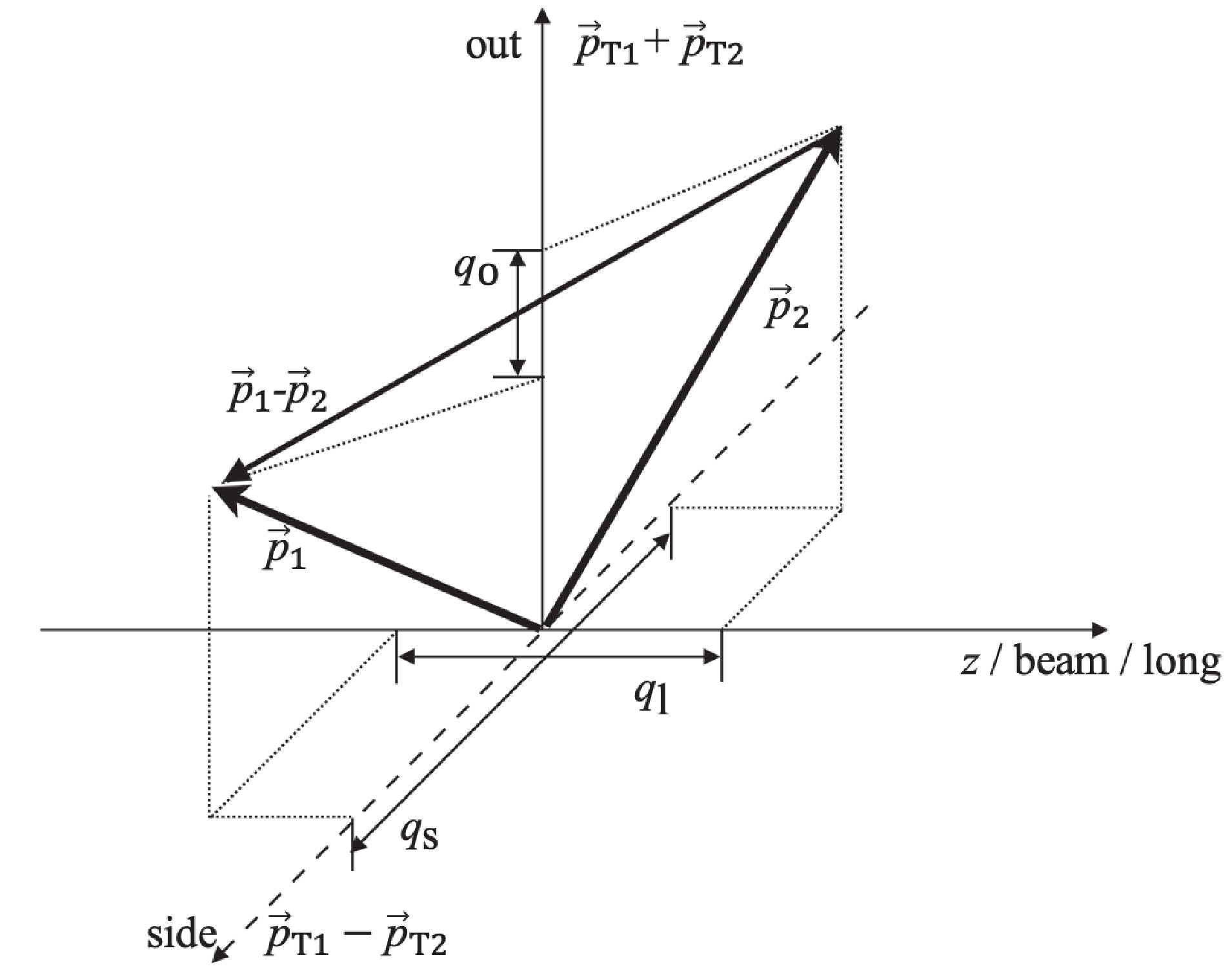 Figure2. The diagram of ‘out-side-long’(o-s-l) coordinate system.
Figure2. The diagram of ‘out-side-long’(o-s-l) coordinate system.In the calculation of the HBT correlation function, the rapidity range is consistently set to
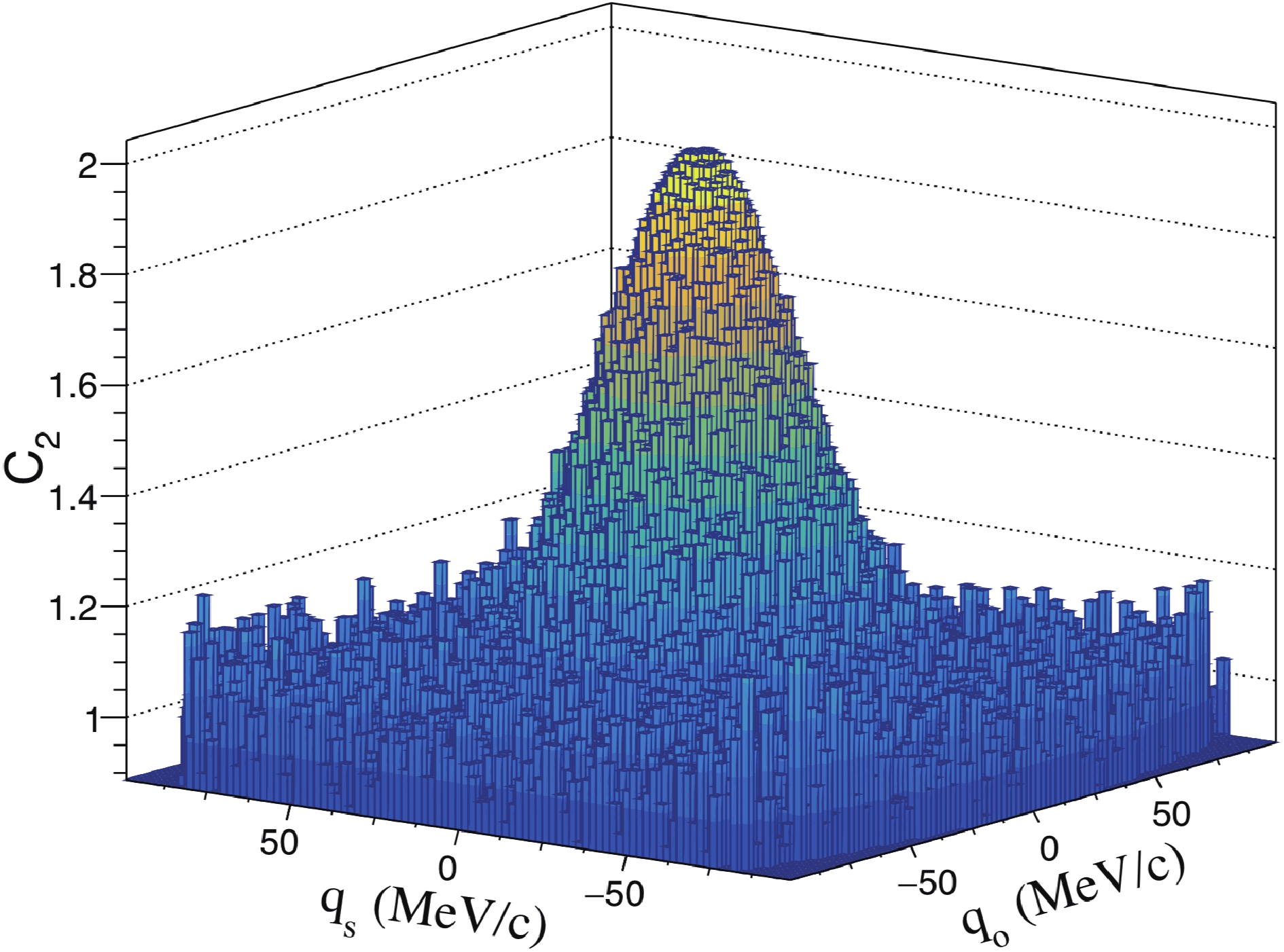 Figure3. (color online) HBT correlation function in
Figure3. (color online) HBT correlation function in The HBT correlation function of the Gaussian form can be written as [25]
$ C({{q}},{{K}}) = 1+\lambda {\exp} {[-q_{\rm o}^2 R_{\rm o}^2({ K})-q_{\rm s}^2 R_{\rm s}^2({ K})- q_{\rm l}^2 R_{\rm l}^2({ K})]}, $  | (2) |
$R_{\rm{s}}^2 = \langle r_{\rm{s}}^2\rangle ,$  | (3) |
$R_{\rm{o}}^2 = \langle {({r_{\rm{o}}} - {\beta _{\rm{o}}}t)^2}\rangle - {\langle {r_{\rm{o}}} - {\beta _{\rm{o}}}t\rangle ^2},$  | (4) |
$R_{\rm{l}}^2 = \langle {({r_{\rm{l}}} - {\beta _{\rm{l}}}t)^2}\rangle - {\langle {r_{\rm{l}}} - {\beta _{\rm{l}}}t\rangle ^2},$  | (5) |
$\langle \xi \rangle = \frac{{\int {{{\rm d}^4}} x\xi S(x,p)}}{{\int {{{\rm d}^4}} xS(x,p)}}.$  | (6) |
First, the influence of the source lifetime must be excluded. Using a Gaussian source to generate pion data, the emission function can be written as
$ S(x,{ p}) = A{ p}^{2}{\rm{exp}}\left(-\frac{\sqrt{{ p}^2+m^2}}{T}\right) {\rm{exp}}\left(-\frac{{ r}^2}{2R^2}-\frac{t^2}{2(\Delta t)^2}\right), $  | (7) |
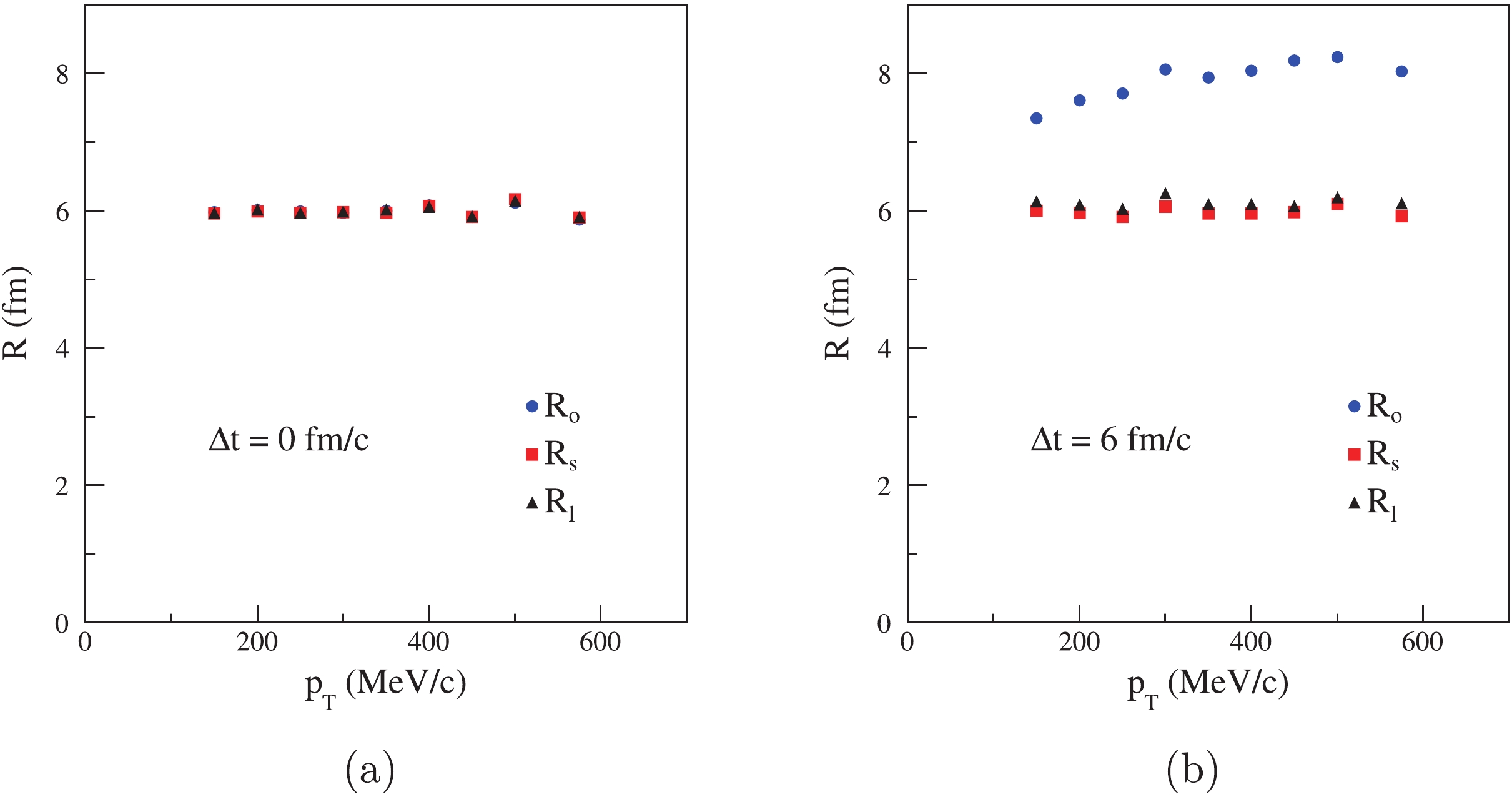 Figure4. (color online) Transverse momentum dependence of HBT radii for a Gaussian source.
Figure4. (color online) Transverse momentum dependence of HBT radii for a Gaussian source.In Fig. 4(a), when the lifetime of source is
 Figure5. HBT radii changes with
Figure5. HBT radii changes with In Fig. 5, the Gaussian source radius remains at 6 fm, and the transverse momentum range is 125–625 MeV/c. We can see the increase of
$R_{\rm{s}}^2 = \langle r_{\rm{s}}^2\rangle ,$  | (8) |
$R_{\rm{o}}^2 = \langle r_{\rm{o}}^2\rangle + {\langle {\beta _{\rm{o}}}\rangle ^2}\langle {(\Delta t)^2}\rangle ,$  | (9) |
$R_{\rm{l}}^2 = \langle r_{\rm{l}}^2\rangle + {\langle {\beta _{\rm{l}}}\rangle ^2}\langle {(\Delta t)^2}\rangle ,$  | (10) |
To discuss the influence of the single-particle angle distribution on the transverse momentum dependence of HBT radii, we introduce another source, i.e., the space-momentum angle correlation source. The emission function can be written as
$ S(x,{ p}) = A{ p}^{2}{\rm{exp}}\left(-\frac{\sqrt{{ p}^2+m^2}}{T}\right) {\rm{exp}}\left(-\frac{{ r}^2}{2R^2}-\frac{t^2}{2(\Delta t)^2}\right) {\rm w}\left(\Delta \varphi\right), $  | (11) |
${\rm{w}}\left( {\Delta \varphi } \right) = \left\{ {\begin{array}{*{20}{l}}0&{\alpha {\rm{ < }}\Delta \varphi \leqslant \pi }\\1&{0 \leqslant \Delta \varphi \leqslant \alpha }\end{array}} \right.,$  | (12) |
In Fig. 6(a),
 Figure6. (color online) HBT radii for a space-momentum angle correlation source.
Figure6. (color online) HBT radii for a space-momentum angle correlation source.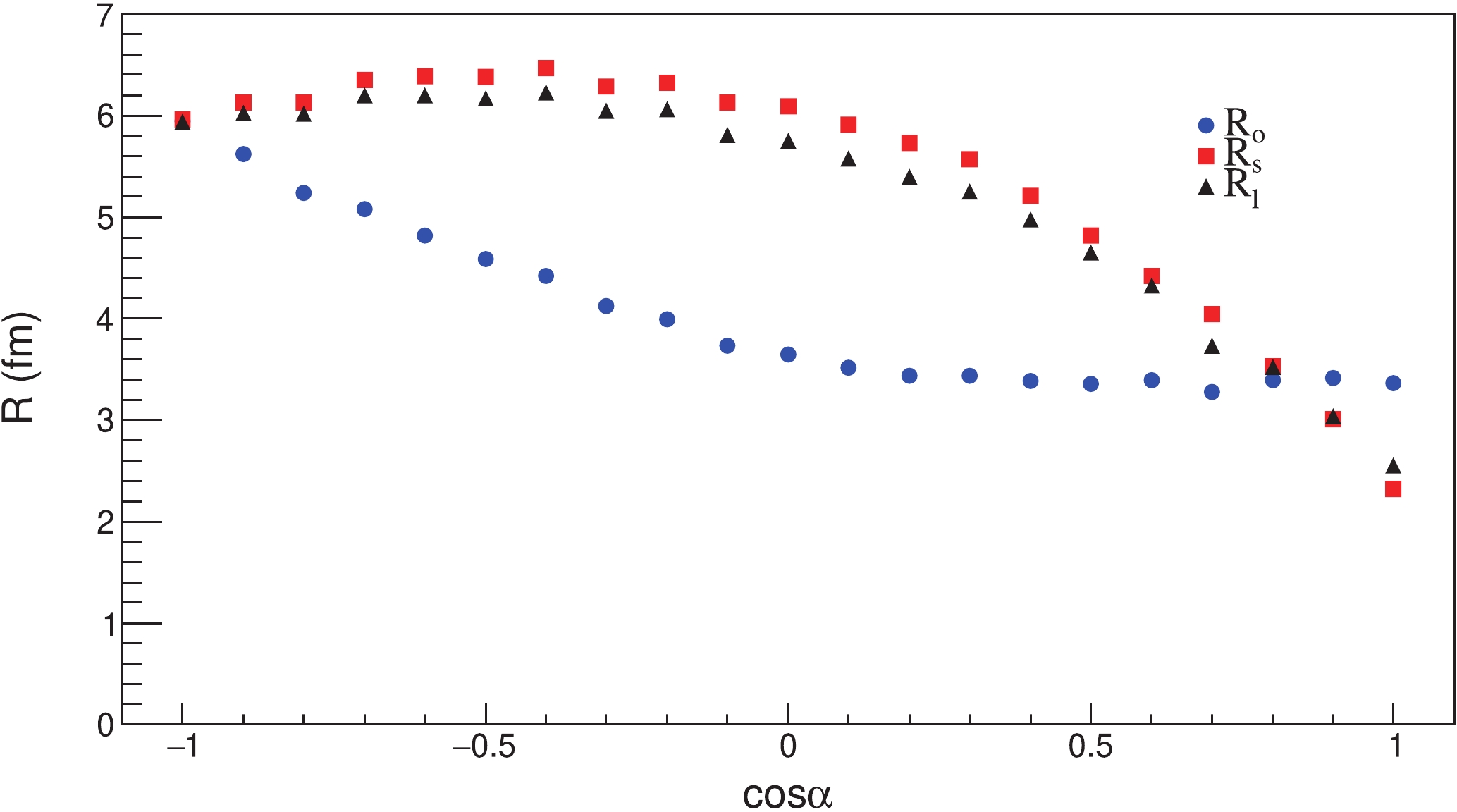 Figure7. (color online)
Figure7. (color online) In Fig. 7, the transverse momentum range is 125–625 MeV/c. When
We use a homogeneous expansion source to calculate the HBT radii in different
$ S = A{ p}^{2}{\rm{exp}}\left(-\frac{\gamma E-\gamma{ {\beta p}}}{T}\right) {\rm{exp}}\left(-\frac{{ r}^2}{2R^2}-\frac{t^2}{2(\Delta t)^2}\right), $  | (13) |
$ f(\Delta\varphi) = c_1{\rm{exp}}(c_2\cos(\Delta\varphi)), $  | (14) |
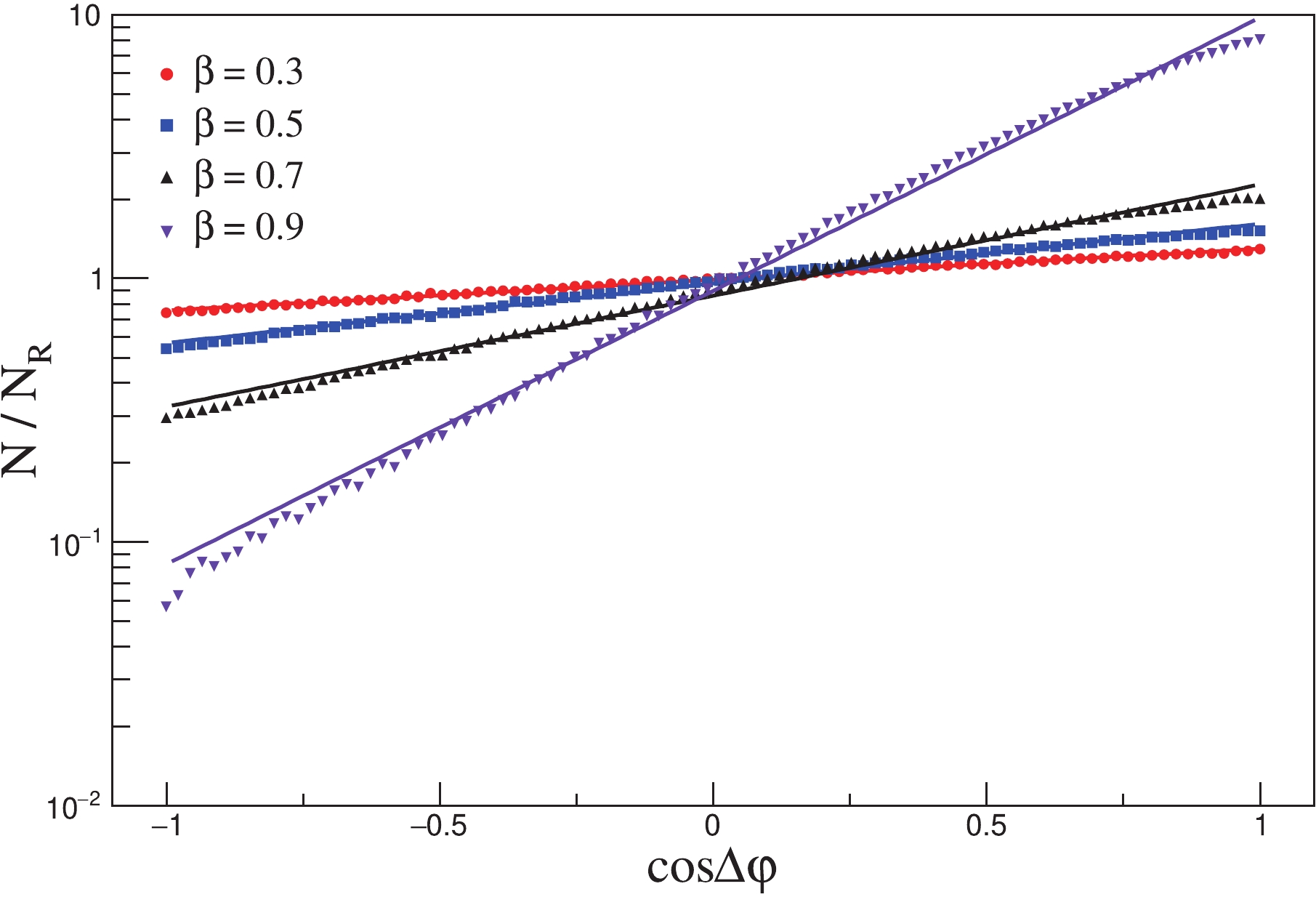 Figure8. (color online) Fit normalized
Figure8. (color online) Fit normalized There are nine bins of
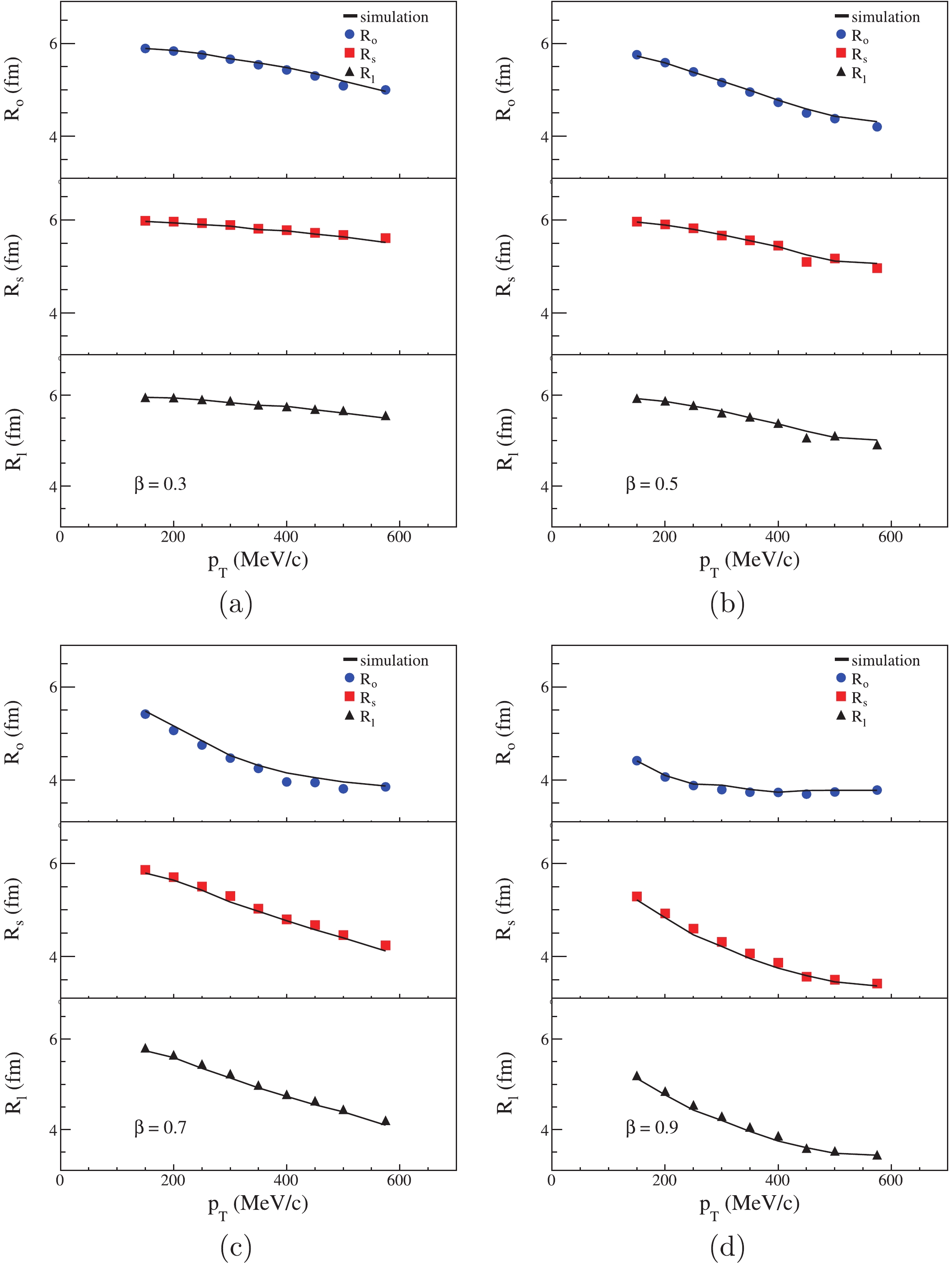 Figure9. (color online) Simulation for a homogeneous expansion source. Black simulation lines are calculated in space-momentum angle correlation source.
Figure9. (color online) Simulation for a homogeneous expansion source. Black simulation lines are calculated in space-momentum angle correlation source.For all four situations in Fig. 9, the simulated HBT radii are almost equal to the HBT radii calculated in the homogeneous expansion sources. This indicates that the source expansion can cause the space-momentum angle
$\begin{split}S\left( {x,p} \right) =& A{M_{\rm{T}}}\cosh \left( {\eta - Y} \right){\rm{exp}}\left( { - \frac{{pu\left( x \right)}}{T}} \right)\\&\times\exp \left( { - \frac{{{{\left( {\tau - {\tau _0}} \right)}^2}}}{{2{{\left( {\delta \tau } \right)}^2}}} - \frac{{{\rho ^2}}}{{2R_{\rm{g}}^2}} - \frac{{{\eta ^2}}}{{2{{\left( {\delta \eta } \right)}^2}}}} \right),\end{split}$  | (15) |
$ u(x) = \left( \cosh\eta\cosh\eta_{\rm T},\sinh\eta_{\rm T}\vec{e}_{\rm T},\sinh\eta\cosh\eta_{\rm T} \right), $  | (16) |
${\eta _{\rm{T}}} = \left\{ {\begin{array}{*{20}{l}}{{\eta _{{\rm{Tmax}}}}\frac{\rho }{{{R_{\rm{g}}}}}}&{\rho < {R_{\rm{g}}}}\\{{\eta _{{\rm{Tmax}}}}}&{\rho \geqslant {R_{\rm{g}}}}\end{array}} \right..$  | (17) |
Since the CRAB filter is set
We generate pions that have random
  | par |   | 250–350 MeV | 350–450 MeV | 450–600 MeV |
| 0.1003 |   |   |   |   |   |
  |   |   |   |   | |
| 0.2027 |   |   |   |   |   |
  |   |   |   |   | |
| 0.3095 |   |   |   |   |   |
  |   |   |   |   | |
| 0.4236 |   |   |   |   |   |
  |   |   |   |   | |
| 0.5493 |   |   |   |   |   |
  |   |   |   |   | |
| 0.6931 |   |   |   |   |   |
  |   |   |   |   |
Table1.Fit results of normalized
 Figure10. (color online) Fit normalized
Figure10. (color online) Fit normalized The fits indicate that, with increase of
${c_1} = {k_1}p_{\rm{T}}^{{j_1}},$  | (18) |
${c_2} = {k_2}p_{\rm{T}}^{{j_2}},$  | (19) |
 Figure11. (color online) Fit
Figure11. (color online) Fit We can also fit the HBT radii in different
$R = ap_{\rm{T}}^b,$  | (20) |
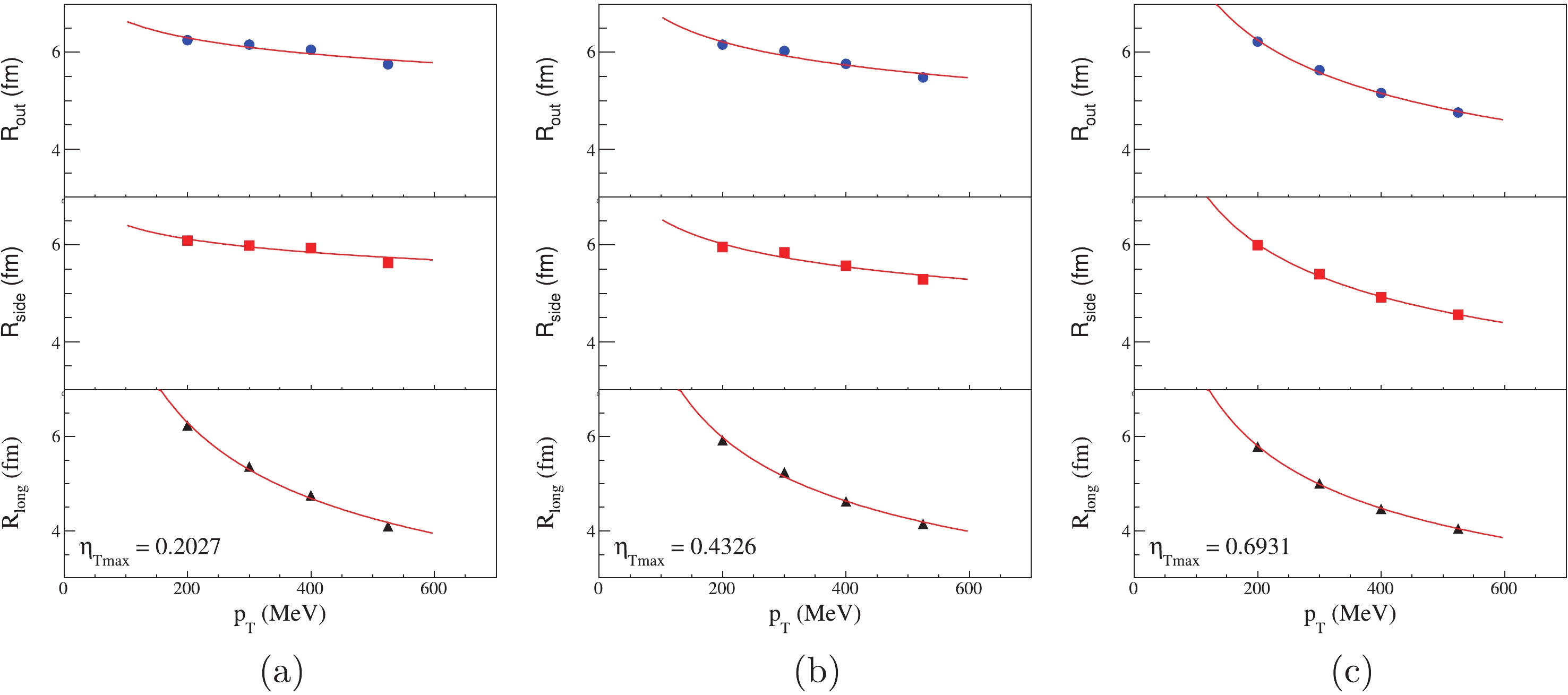 Figure12. (color online) Fit HBT radii for different
Figure12. (color online) Fit HBT radii for different In the Fig. 12, there are three cases of
We plot parameters b as the function of k and j in Fig. 13. Because of the longitudinal limit, there is barely any changes in
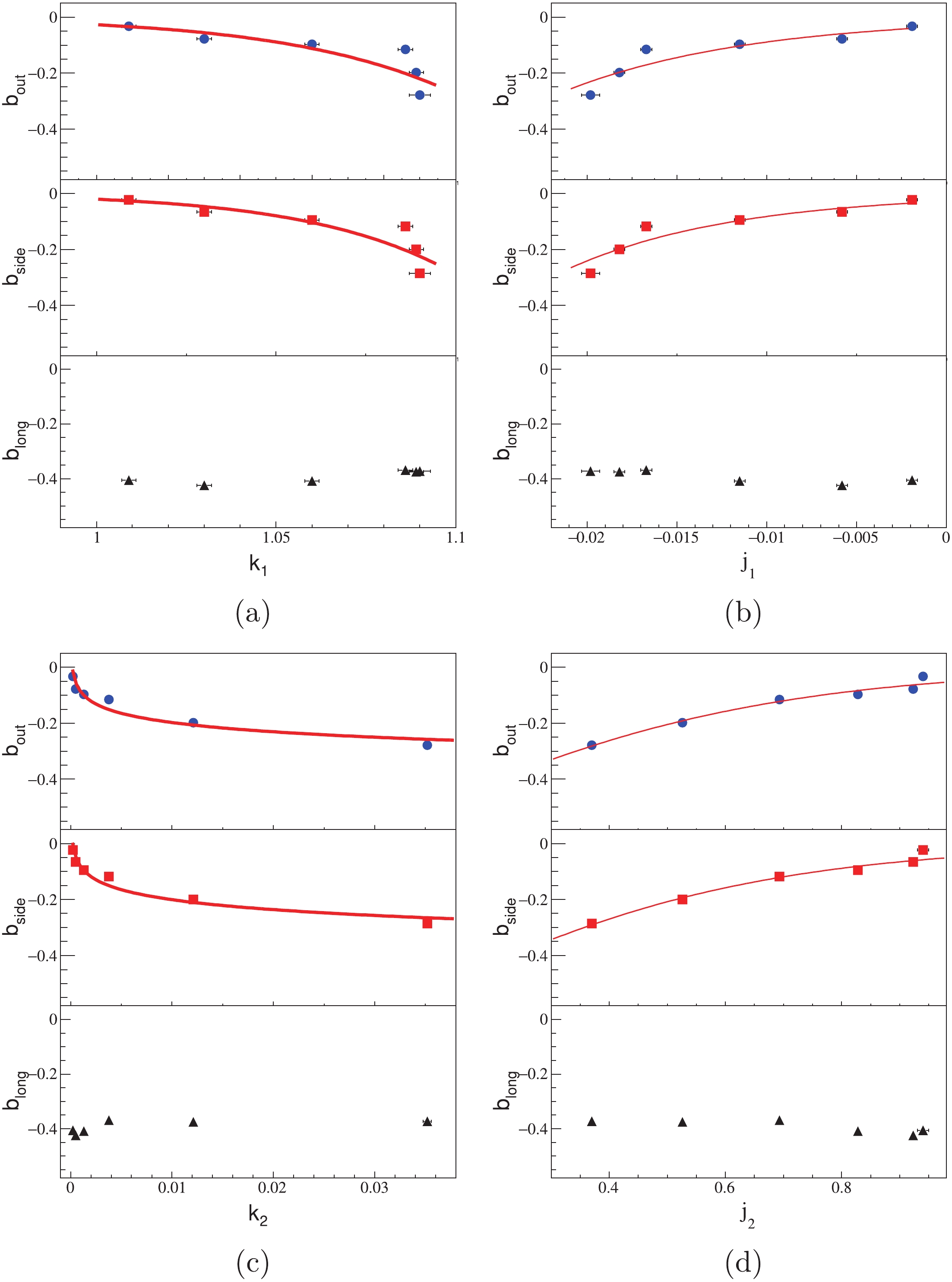 Figure13. (color online) Fit parameters in cylinder expansion source. b from HBT radii fit function
Figure13. (color online) Fit parameters in cylinder expansion source. b from HBT radii fit function $b({k_1}) = {\mu _{11}}{k_1}^{{\mu _{12}}},$  | (21) |
$b({j_1}) = {\nu _{11}}{{\rm e}^{ - {\nu _{12}}{j_1}}},$  | (22) |
$b({k_2}) = {\mu _{21}}\ln {k_2} + {\mu _{22}},$  | (23) |
$b({j_2}) = {\nu _{21}}\left( {\frac{1}{{1 + {{\rm e}^{{\nu _{{\rm{22}}}}{{\rm{j}}_{\rm{2}}}}}}} - 1} \right).$  | (24) |
| Parameters |   |   | |
  |   |   |   |
  |   |   | |
  |   |   | |
  |   |   | |
  |   |   |   |
  |   |   | |
  |   |   | |
  |   |   | |
Table2.Fit results of
A connection has been made between the
We appreciate the help of Miaomiao An for discussions on the details of this work. We thank Xiaoze Tan and Weicheng Huang for valuable advice on this manuscript.
